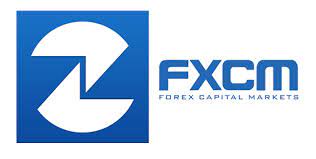
Understanding Currency Correlation in Forex Trading
Forex trading involves buying and selling currency pairs. Traders profit from changes in exchange rates. Understanding currency correlations is crucial. It helps manage risks and improves trading strategies.
What is Currency Correlation?
Currency correlation measures the relationship between two currency pairs. A positive correlation means pairs move in the same direction. A negative correlation means they move in opposite directions. For example, EUR/USD and GBP/USD often correlate positively. If EUR/USD rises, GBP/USD likely rise too. Conversely, USD/JPY and EUR/USD often correlate negatively. When USD/JPY rises, EUR/USD tends to fall.
How to Measure Currency Correlation
Correlation coefficients measure currency correlation. A positive correlation coefficient (+1 to 0) indicates pairs move together. A negative coefficient (-1 to 0) indicates pairs move oppositely. A coefficient of 0 means no correlation.
Traders use various tools to measure currency correlation:
Online correlation calculators: Websites like Investing.com offer free tools.
Trading platforms: Platforms like MetaTrader 4 have built-in correlation indicators.
Importance of Currency Correlation in Forex Trading
Understanding currency correlation aids in risk management and strategy enhancement.
Diversification and hedging strategies: Correlated pairs can help balance exposure.
Avoiding overexposure: Traders avoid trading too many positively correlated pairs to manage risk better.
Identifying potential trading opportunities: Correlations can reveal new trade possibilities.
Predicting market movements: Understanding correlations helps anticipate price movements.
Stay ahead in the financial market by joining a global network of finance professionals. Find your perfect liquidity partners now!
Major Currency Pair Correlations
Here are some of the major currency pairs and their correlations:
EUR/USD and GBP/USD
These pairs often have a strong positive correlation. For example, from 2010 to 2020, their average correlation coefficient was around +0.85. It indicates they moved in the same direction.
USD/JPY and EUR/JPY
These pairs usually show a positive correlation. Historically, their correlation coefficient has been around +0.70. They often rise or fall together.
AUD/USD and NZD/USD
These pairs are highly correlated. Due to their economic ties, they often move together. Their correlation coefficient usually ranges from +0.85 to +0.90.
Factors Influencing Currency Correlations
These are the factors that affect currency correlation:
Interest rates
Central banks’ changes in interest rates directly affect currency values. Higher interest rates attract foreign capital, increasing currency value.
Inflation rates
High inflation typically devalues a currency. It impacts its correlation with other currencies.
GDP growth
Strong GDP growth can boost a currency’s value and influence its correlation with other currencies.
Trade agreements
Agreements or disputes can affect currency values and their correlations. For example, the US-China trade war influenced USD and CNY correlations with other currencies.
Political stability
Political uncertainty or stability in a country can impact its currency’s strength and correlations.
Market sentiment
Traders’ perceptions and reactions to global events can shift currency correlations.
Conclusion
Understanding currency correlations helps manage risk and identify profitable trades. Traders must use the right tools and stay informed about economic and geopolitical factors. Correlation analysis in trading strategy enhances your trading outcomes.
Contact us now and reach your target audience!
Follow us on LinkedIn to get daily Forex news!






